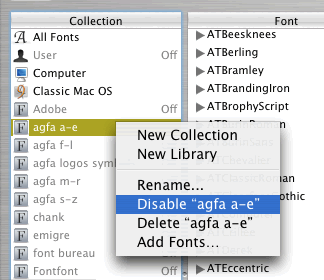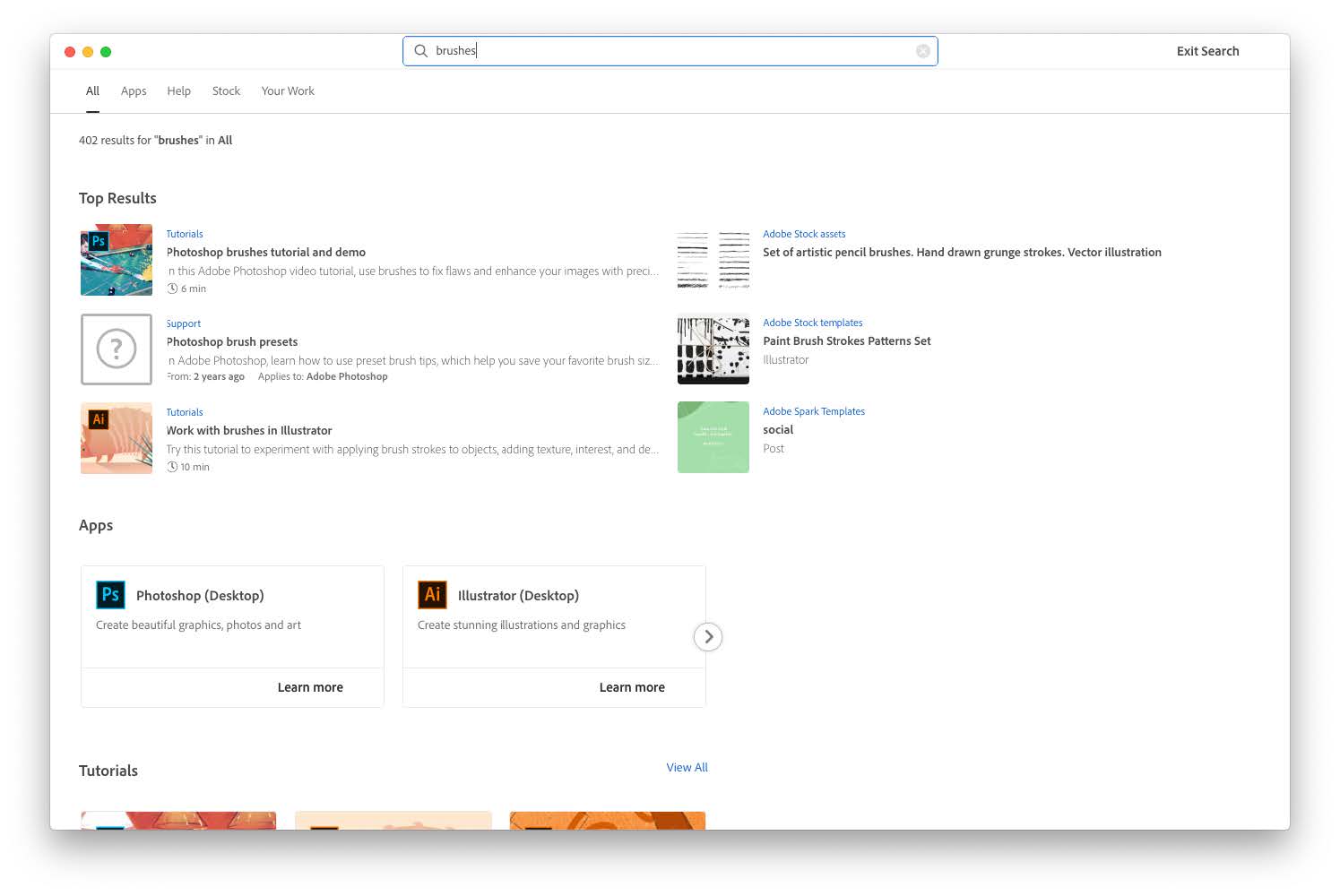Apr 23, 2008 I have a mixture of font type I use (TTF, OpenType etc) on my PC. I know a lot of font types are not compatible between PC and Mac. My questions is, are OpenType fonts compatible with Mac? What suggestions would you give to people working on two platforms as to how to best manage their font library (short of buying two versions of the same fonts)? The majority of Adobe's fonts are now available on fonts.adobe.com as part of the Adobe Fonts subscription library or the Adobe Fonts Marketplace. Perpetual desktop licenses for any Adobe typeface are available from Fontspring. For font purchasing with other currencies and languages, you can. Adobe Fonts partners with the world’s leading type foundries to bring thousands of beautiful fonts to designers every day. No need to worry about licensing, and you can use fonts from Adobe Fonts on the web or in desktop applications.
Jun 01, 2012 I tried to add fonts to my Adobe Acrobat Standard X program, but I cannot locate the fonts folder. I was able to locate the fonts folder in other programs for the Adobe Creat. SOLVED Adobe Fonts location on computer - General Software Forum - Spiceworks.
Click the Creative Cloud desktop icon to launch the app from the taskbar (Windows) or menu bar (macOS).
Click the fonts icon in the upper-right corner. Then click Browse Fonts.
Does your screen look different? See instructions for the earlier version of the Creative Cloud desktop app.
A browser window opens and you are signed in to fonts.adobe.com.
Browse or search for fonts. Use the filters on the left to narrow the results.
Once you find a font, click the slider next to the font name to either activate or deactivate it.
The activated fonts are listed under the fonts icon in the Creative Cloud desktop app and in the font list in your desktop apps. Some desktop applications, like Microsoft Word, may require a restart after a new font has been activated.
If you launch the Creative Cloud desktop app while offline, fonts won't display in the font lists of your apps. However, if you go offline while the Creative Cloud desktop app is running, any activated fonts will still be listed and available to use.
You can enable or disable the Adobe Fonts service from Creative Cloud desktop app. Disabling Adobe Fonts deactivates any activated fonts and prevents you from activating other fonts from the service.
In Creative Cloud desktop app, click the gear icon in the upper-right corner.
Does your screen look different? See instructions for the earlier version of the Creative Cloud desktop app.
Click Services on the sidebar. Then disable the Adobe Fonts option.

More like this
Twitter™ and Facebook posts are not covered under the terms of Creative Commons.
Legal Notices | Online Privacy Policy

Adobe Type Manager (ATM) was the name of a family of computer programs created and marketed by Adobe Systems for use with their PostScriptType 1 fonts. The last release was Adobe ATM Light 4.1.2, per Adobe's FTP (at the time).[1]
Modern operating systems such as Windows and MacOS have built-in support for PostScript fonts, negating the need for Adobe's 3rd party utility.
Apple Macintosh[edit]
The original ATM was created for the AppleMacintosh computer platform to scale PostScript Type 1 fonts for the computer monitor, and for printing to non-PostScript printers. Mac Type 1 fonts come with screen fonts set to display at certain point sizes only. In Macintosh operating systems prior to Mac OS X, Type 1 fonts set at other sizes would appear jagged on the monitor. ATM allowed Type 1 fonts to appear smooth at any point size, and to print well to non-PostScript devices.
Around 1996, Adobe expanded ATM into a font-management program called ATM Deluxe; the original ATM was renamed ATM Light. ATM Deluxe performed the same font-smoothing function as ATM Light, but performed a variety of other functions: activation and deactivation of fonts; creating sets of fonts that could be activated or deactivated simultaneously; viewing and printing font samples; and scanning for duplicate fonts, font format conflicts, and PostScript fonts missing screen or printer files.
Around 2001, with Apple's Mac OS X, support for Type 1 fonts was built into the operating system using ATM Light code contributed by Adobe. ATM for Mac was then no longer necessary for font imaging or printing.
Adobe discontinued development of ATM Deluxe for Macintosh after Apple moved to Mac OS X. Adobe ceased selling ATM Deluxe in 2005.[citation needed] ATM Deluxe does not work reliably under OS X (even under Classic), however, ATM Light is still helpful to Type 1 font users under Classic.
Microsoft Windows[edit]
Adobe ported these products to the Microsoft Windows operating system platform, where they managed font display by patching into Windows (3.0, 3.1, 95, 98, Me) at a very low level. The design of Windows NT made this kind of patching unviable, and Microsoft initially responded by allowing Type 1 fonts to be converted to TrueType on install, but in Windows NT 4.0, Microsoft added 'font driver' support to allow ATM to provide Type 1 support (and in theory other font drivers for other types).[citation needed]
As with ATM Light for Macintosh, Adobe licensed to Microsoft the core code, which was integrated into Windows 2000 and Windows XP, making ATM Light for Windows obsolete, except for the special case of support for 'multiple master' fonts, which Microsoft did not include in Windows, and for which ATM Lite still acts as a font driver.[citation needed]
ATM Light is still available for Windows users,[2] but ATM Deluxe is no longer developed or sold.[3]
Users of ATM 4.0 (Light or Deluxe) on Windows 95/98/ME who upgrade to Windows 2000/XP may encounter problems, and it is vital not to install version 4.0 into Windows 2000 or later; affected users are encouraged to visit the Adobe web site for technical information and patches. Version 4.1.2 is fully compatible with Windows 2000 and XP (It will run on XP 64-bit, but because the installer doesn't work it must be first installed on 32-bit XP and then copied over to 64-bit XP).
ATM installed on XP may prevent a system from entering standby - the error message indicates keyboard driver needs updating. Uninstalling ATM corrects the issue.
Adobe Font Library Typefaces
Windows Vista is incompatible with both ATM Light and ATM Deluxe.[citation needed] Windows Vista can use Adobe Type 1 fonts natively, making add-ons like ATM unnecessary.
The latest version of ATM for Windows 3.1 is 3.02. There was no ATM Deluxe for Windows versions prior to 95.
Acrobat Reader, starting with version 2.1, installs a version of ATM for its own use, referred to as a Portable Font Server, but there is no control panel or other user interface for it.[4] It is therefore unsuitable for the tasks which most people need to install ATM for.
Other operating systems[edit]
Adobe Type Manager was also made available for a select few PC operating systems available during the early 1990s, including NeXTSTEP,[5]DESQview,[6][7] and OS/2.[8][9] Unlike the Windows and Mac versions, these versions of ATM were bundled with the OS itself.
There were also ATM versions for extremely popular DOS applications, the most notable being WordPerfect5.0 and 5.1.[citation needed] This incarnation of ATM, made by LaserTools was named PrimeType in the United States and Adobe Type Manager for WordPerfect elsewhere.[10] An alternative to ATM for WordPerfect 5.1 was infiniType Plus by SoftMaker.[11]WordPerfect 6.0 and newer included its own Type 1 system, making third-party solutions obsolete.
Competing products[edit]
- Linotype FontExplorer X
- Extensis Suitcase Fusion
- Bohemian Coding FontCase
See also[edit]

References[edit]
- ^Adobe ATM Light 4.1.2
- ^ATM Light Download
- ^ATM Deluxe product information page
- ^Adobe Acrobat 2.1 Fact Sheet
- ^PC Magazine: Adobe Type Manager Definition
- ^DESQview/QEMM Frequently Asked Questions
- ^DESQview/X
- ^OS/2 Warp FAQ List (20 Feb 95) Section 0505Archived 5 May 2008 at the Wayback Machine
- ^Microsoft OS/2 for DECpcs, Version 1.3 Software Product DescriptionArchived 29 October 2006 at the Wayback Machine
- ^WPDOS - A font installation utility for Type 1 soft fonts and WPDOS 5.1
- ^WPDOS - TrueType and Type 1 Fonts with WPDOS 5.1